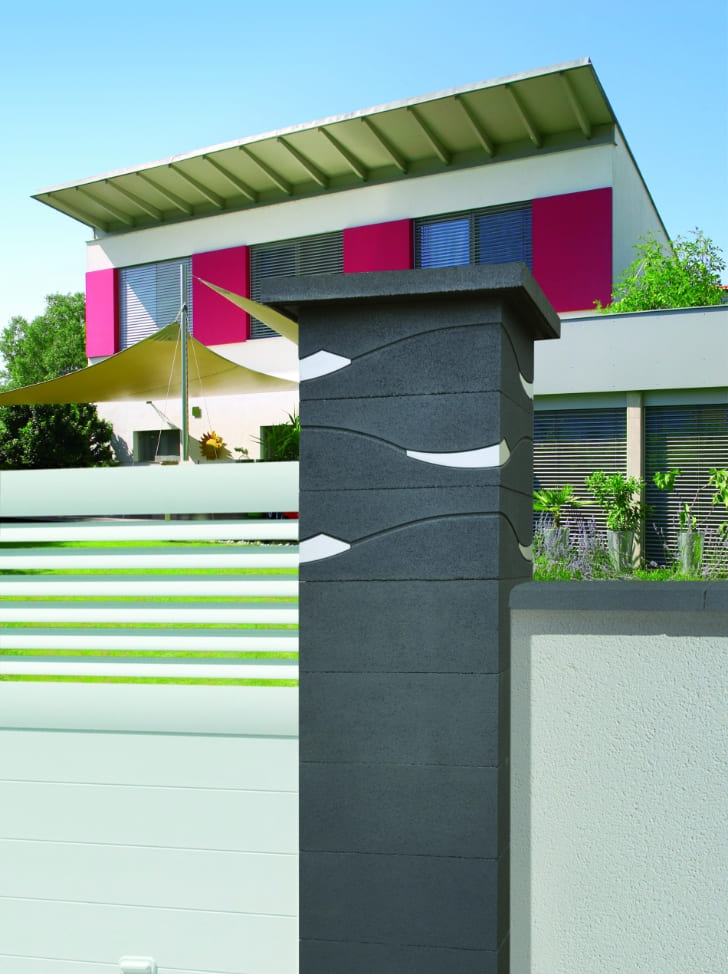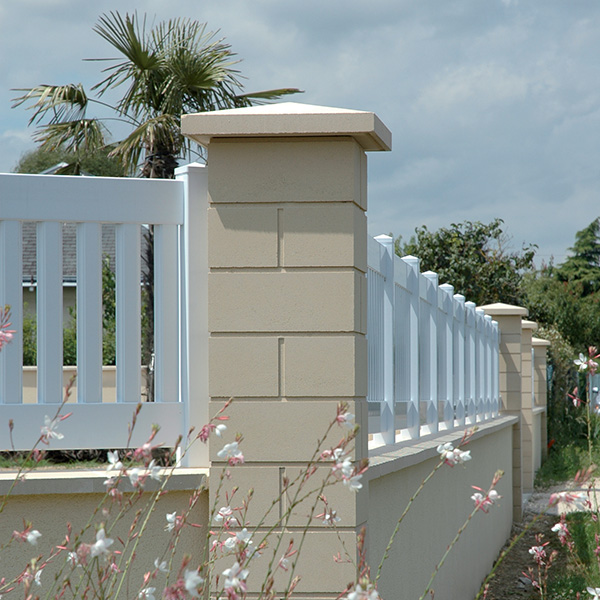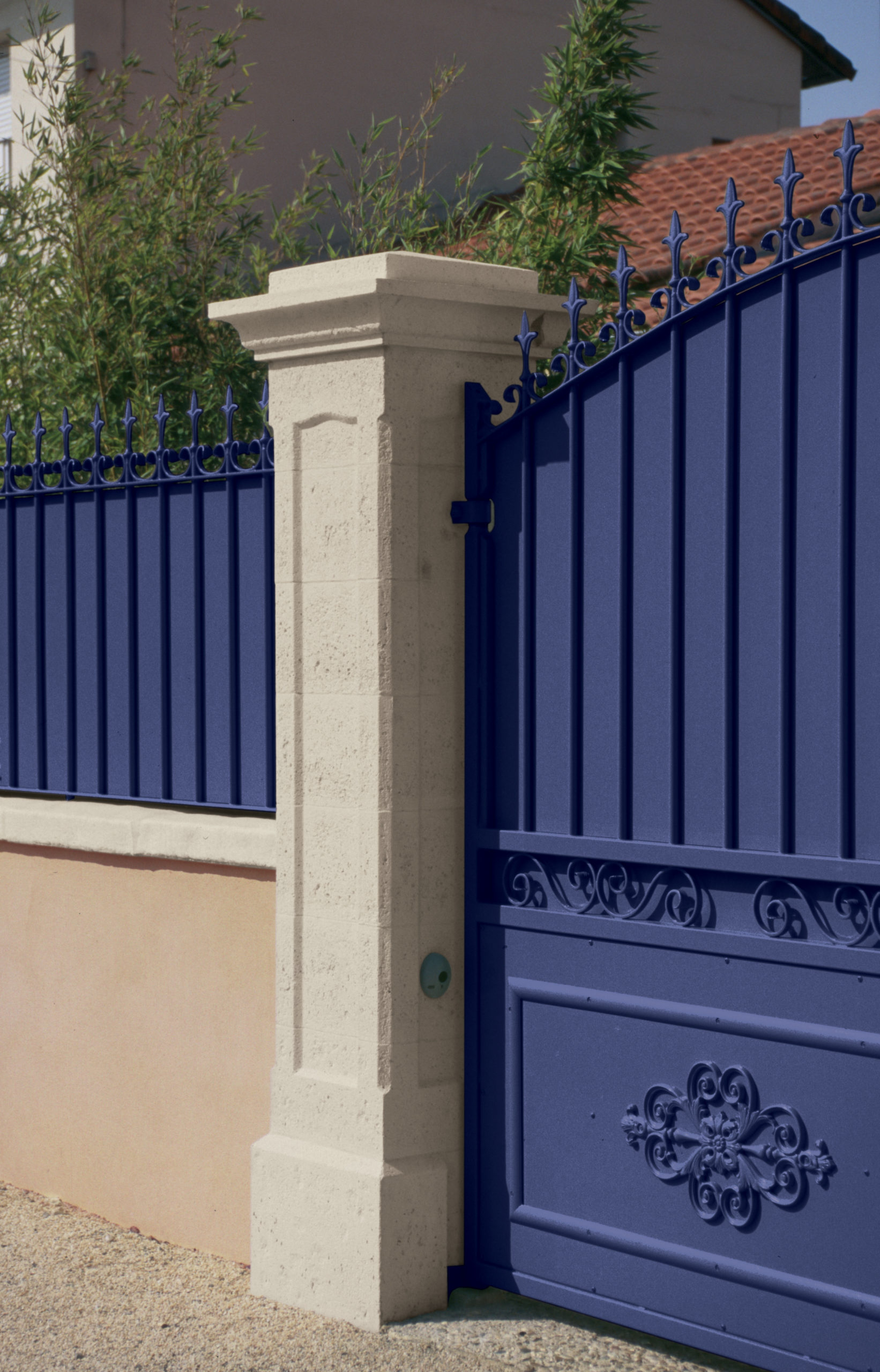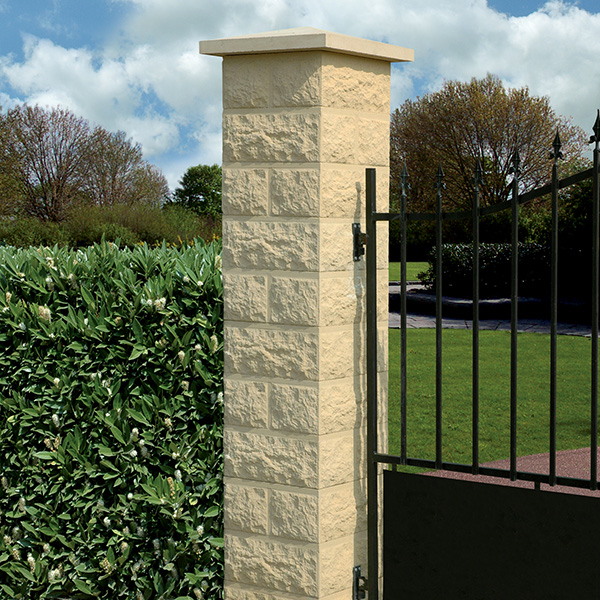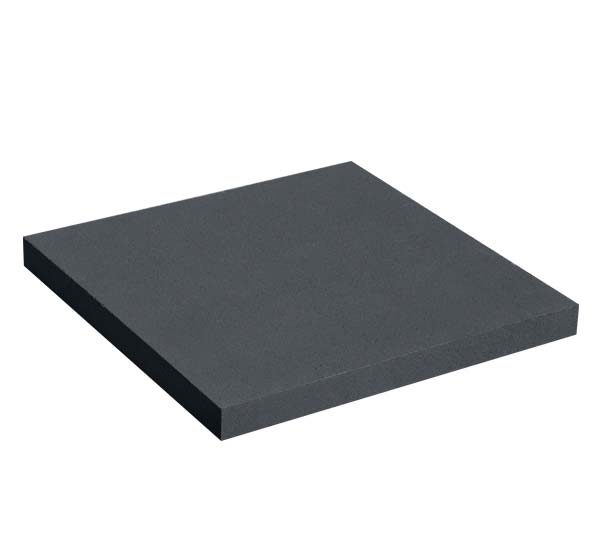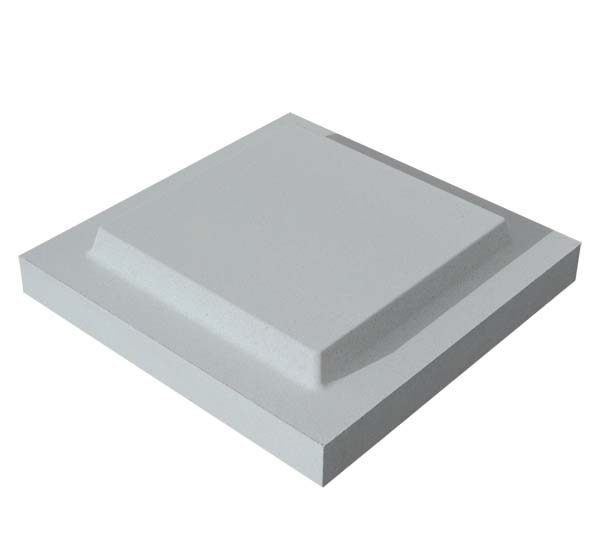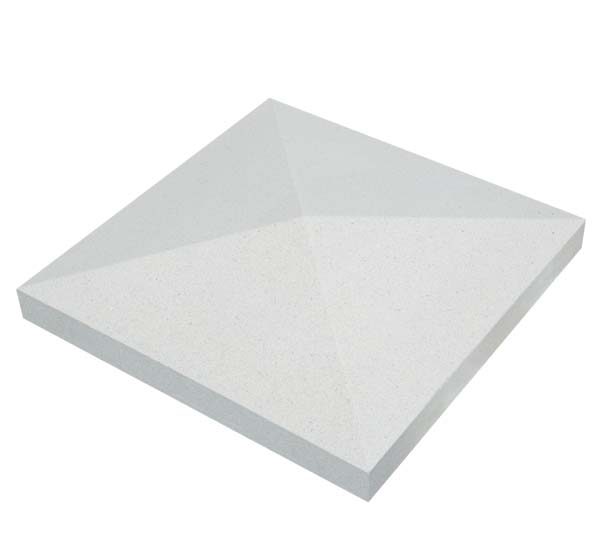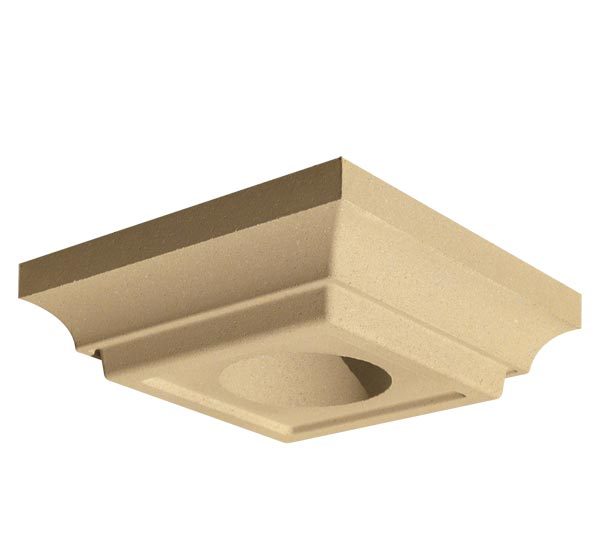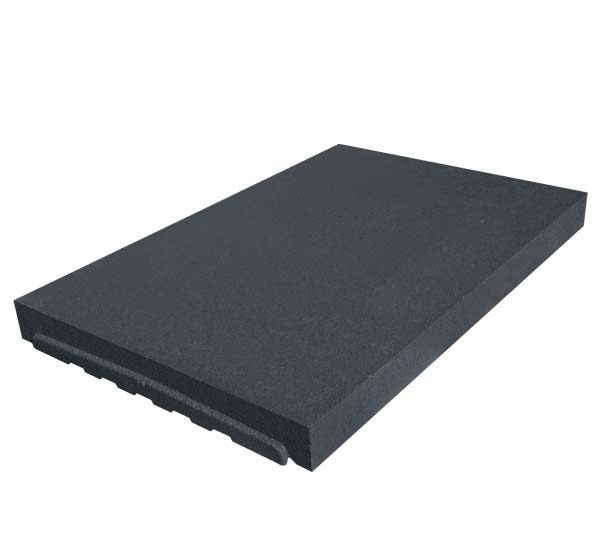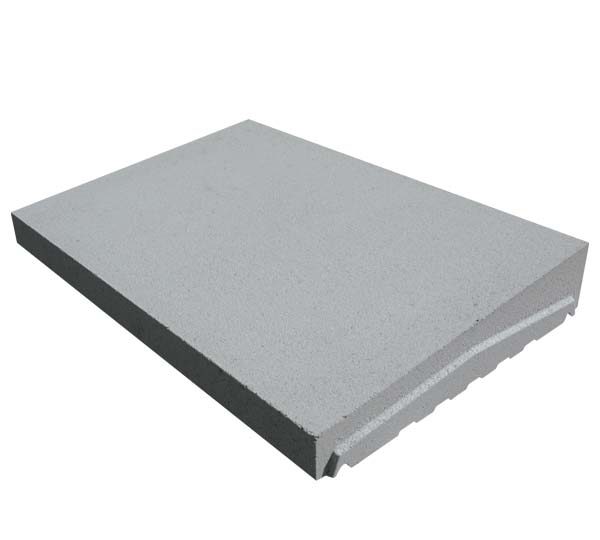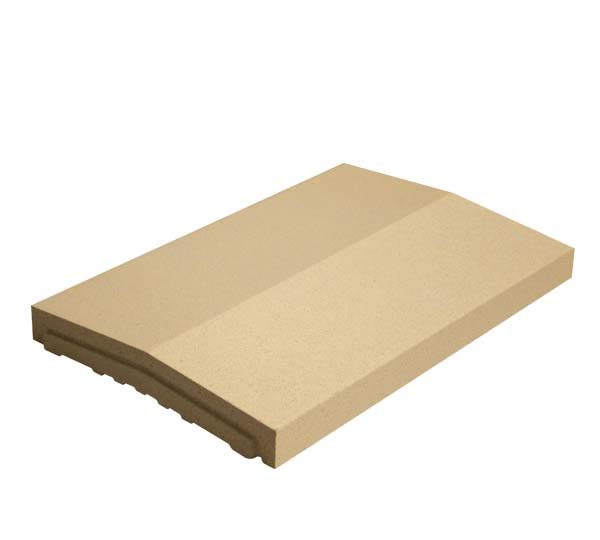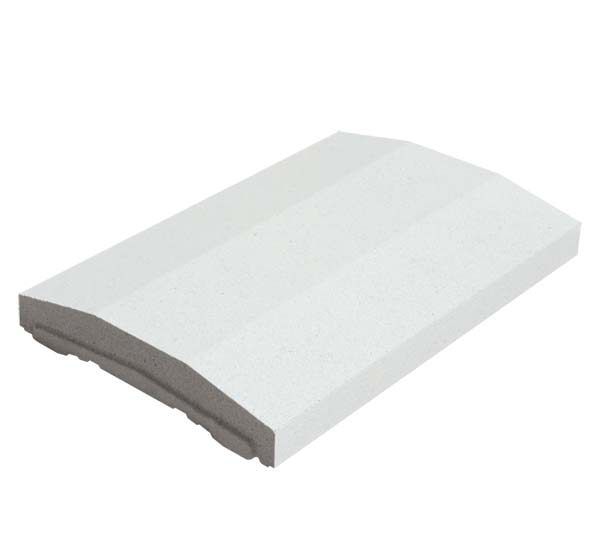How do you build the right fence?
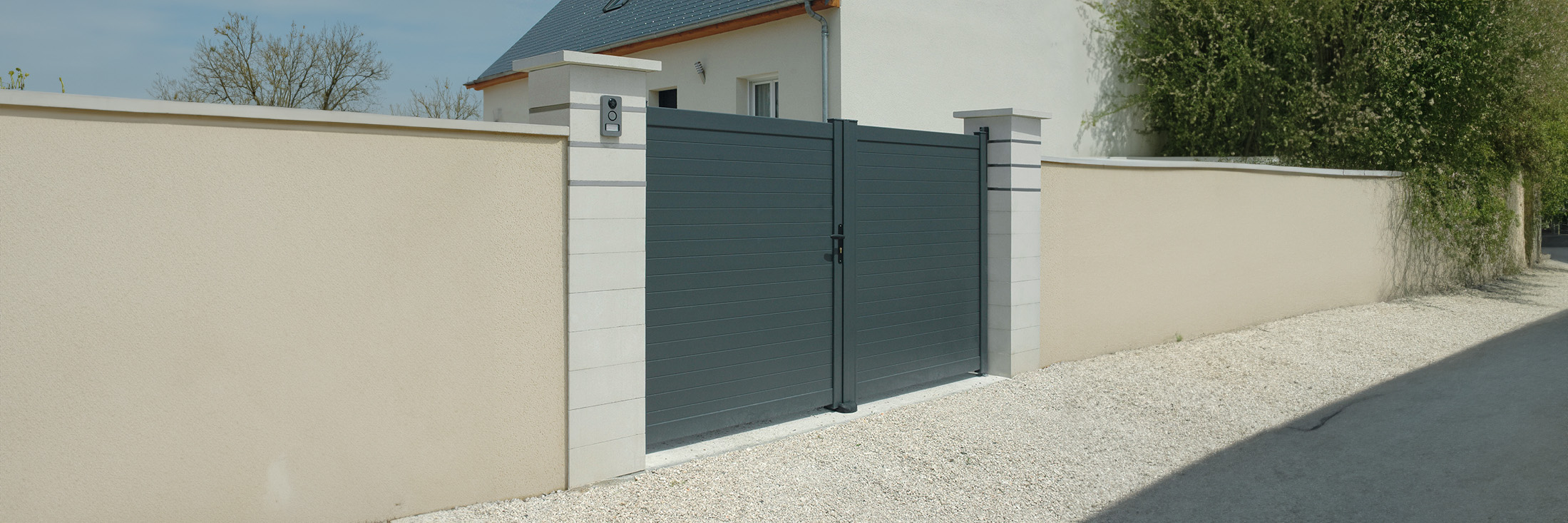
Often overlooked when building a house, fencing is the first image of your home. It secures and delimits your outdoor space, while adding a decorative and aesthetic touch.
Gate pillars
What is a gate pillar?
Gate pillars complement low walls and frame the gate to delimit and enclose the exterior of your home. They must be strong enough to support the weight of the gate and its mechanism. A pillar is usually installed on either side of the entrance gate. To break with the long, low appearance of the wall, you can also position pillars at different points along the wall.
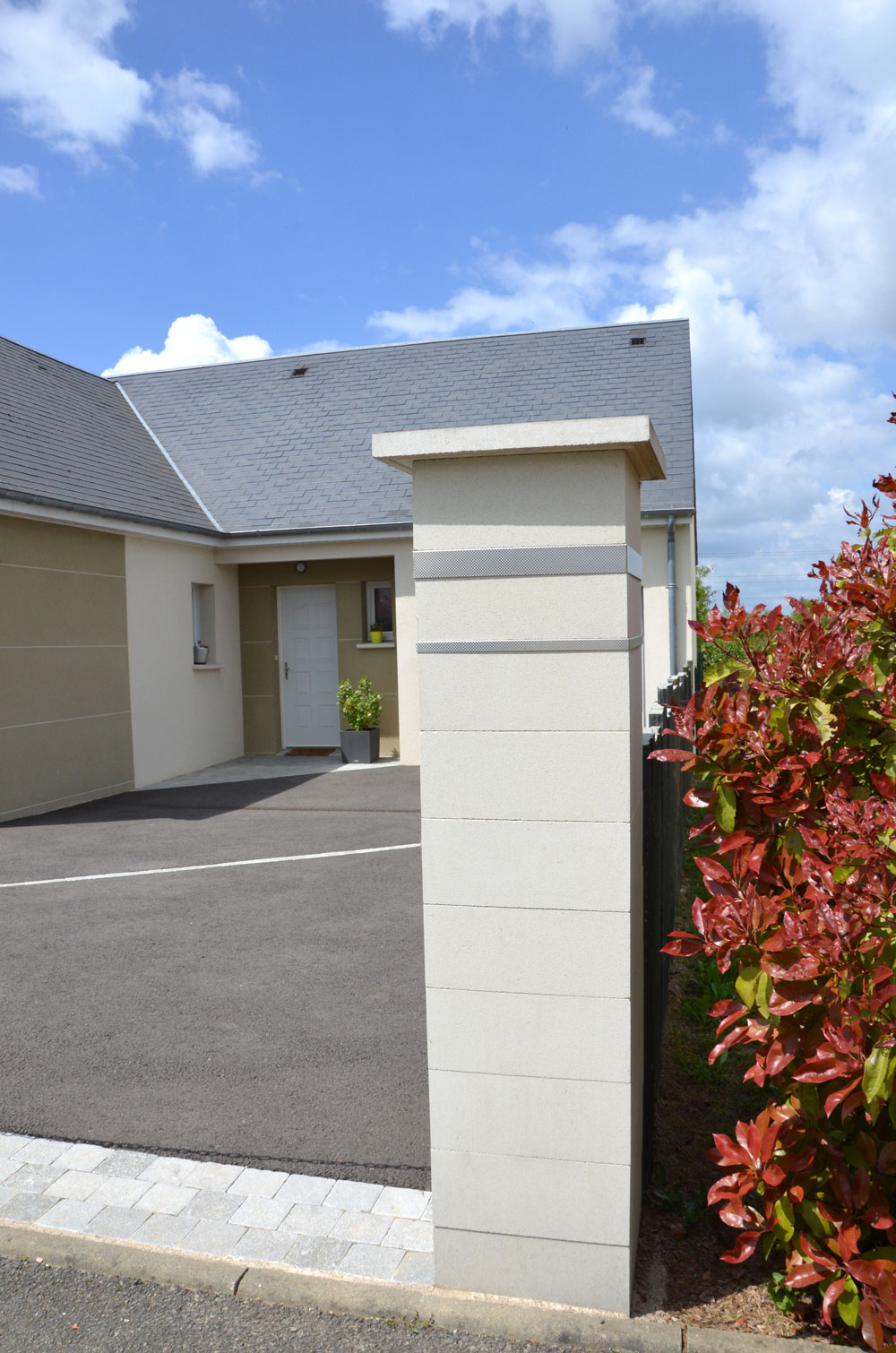
What makes up a pillar?
An abutment is made up of several interlocking hollow abutment elements and an abutment cap.
For the structure to be solid and stable, reinforced concrete must be poured inside the elements.
To ensure long-lasting, reliable installation, please follow the manufacturer’s instructions for use.
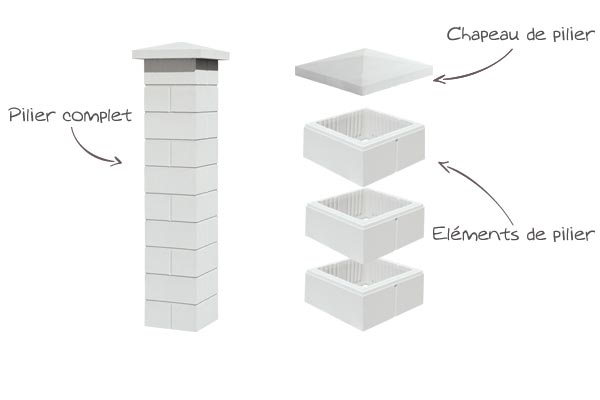
Which materials to choose?
Gate pillars are available in different materials: concrete or reconstituted stone, and with different designs: contemporary, classic, rustic, antique…
There is a vast choice of combinations.
All these materials are weather-resistant and long-lasting, but each has different characteristics.
- Reconstituted stone → Perfectly reproduces the look of natural stone, it’s aesthetically pleasing, durable, environmentally friendly and offers excellent value for money. It’s a finished product right from installation.
- Concrete → Is a raw product, generally requiring a finish such as plaster, facing tiles or exterior earthenware. It’s economical, but finishing products can be very expensive, for a final result that may not be what you wanted.
How to choose your gate post?
Pillars are used to support your gate, carrying the hinges (the metal part that pivots the door leaf) and the frames. The size and choice of your pillars will depend on their strength and ability to support the weight and opening/closing movements.
If your gate is equipped with a motorized system, choose sturdy pillars to support the entire electrical system.
When it comes to aesthetics, it’s best to match your pillars to the facade of your house, the walls of your fence and your gate. Give free rein to your creativity and choose the pillars that suit you.
For all styles, you can opt for reconstituted stone pillars or concrete pillars to dress yourself.
Once you’ve chosen your pillars, you can select your pillar caps and capitals.
Hats, capitals and copings
What is the role of hats and chaperones?
Caps, capitals and copings are masonry finishing and protection components. Caps and capitals are designed for pillars, and copings for walls and low walls. They are available in a variety of colors and shapes, allowing you to personalize your pillars.
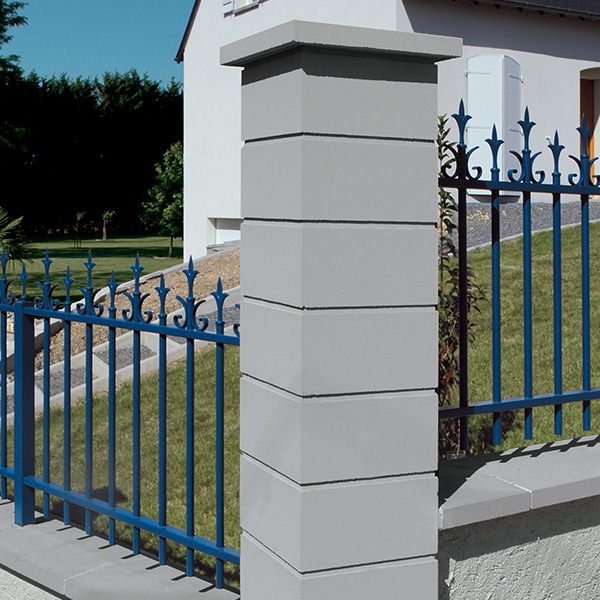
Wall copings are available in 3 models:
- Chaperon plat → is the sleekest of chaperons, matching any style of fence.
- Chaperon 1 pente → this is the most suitable for a separation fence between your home and that of your neighbors, allowing you to choose which side of the wall the water will be drained through.
- 2-slope coping → this is the most common type, with two slopes to allow water to drain away from both sides of the wall.
- Chaperon spécial platines → specially designed for the installation of fence plates.

